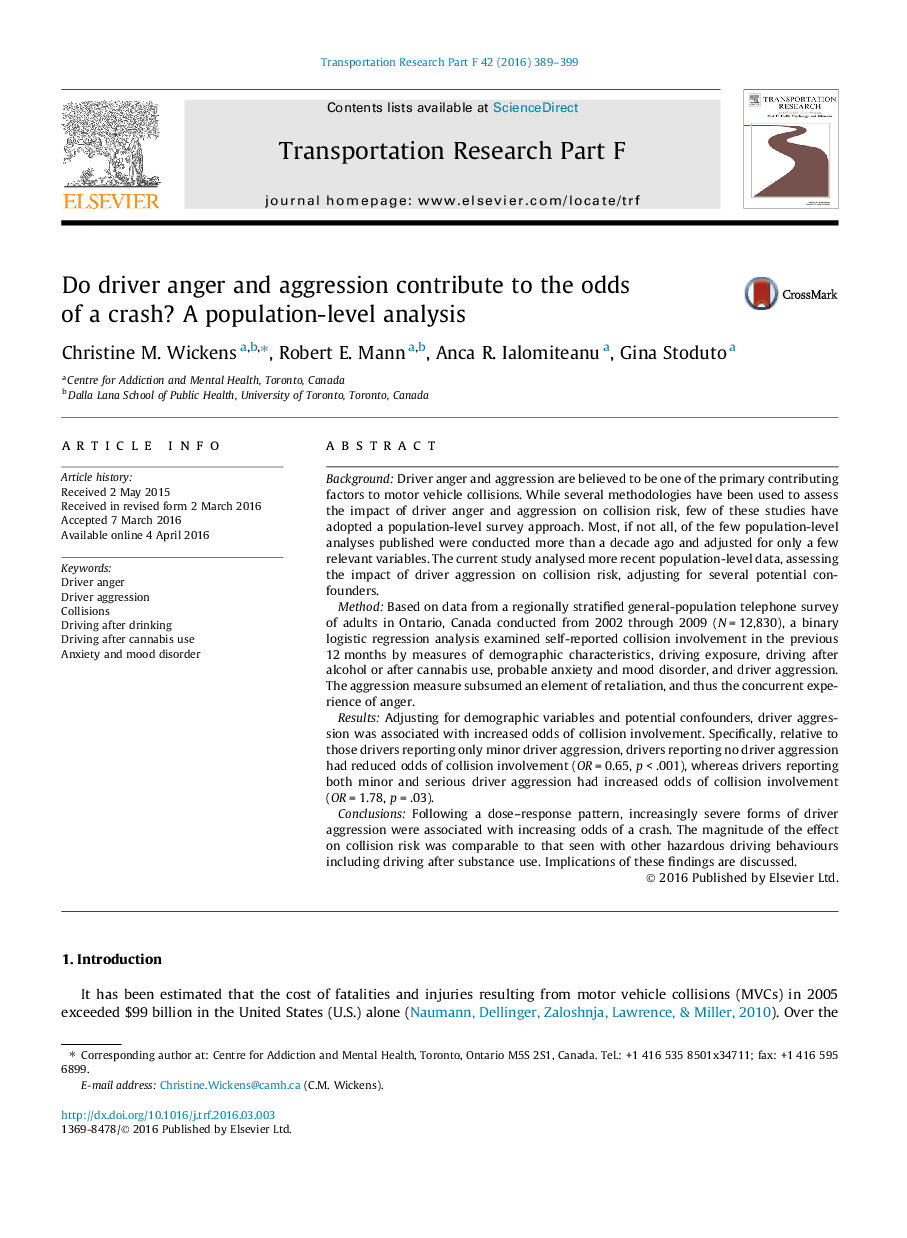| کد مقاله | کد نشریه | سال انتشار | مقاله انگلیسی | نسخه تمام متن |
|---|---|---|---|---|
| 5037516 | 1370225 | 2016 | 11 صفحه PDF | دانلود رایگان |
- Absence of driver aggression had lower odds of crash than minor driver aggression.
- Serious plus minor aggression had higher odds of crash than minor aggression alone.
- The results appeared to follow a dose-response pattern.
- These findings adjusted for demographics, exposure, and other risk factors.
- The magnitude of aggression's effect resembled that of driving after substance use.
Background: Driver anger and aggression are believed to be one of the primary contributing factors to motor vehicle collisions. While several methodologies have been used to assess the impact of driver anger and aggression on collision risk, few of these studies have adopted a population-level survey approach. Most, if not all, of the few population-level analyses published were conducted more than a decade ago and adjusted for only a few relevant variables. The current study analysed more recent population-level data, assessing the impact of driver aggression on collision risk, adjusting for several potential confounders.Method: Based on data from a regionally stratified general-population telephone survey of adults in Ontario, Canada conducted from 2002 through 2009 (N = 12,830), a binary logistic regression analysis examined self-reported collision involvement in the previous 12 months by measures of demographic characteristics, driving exposure, driving after alcohol or after cannabis use, probable anxiety and mood disorder, and driver aggression. The aggression measure subsumed an element of retaliation, and thus the concurrent experience of anger.Results: Adjusting for demographic variables and potential confounders, driver aggression was associated with increased odds of collision involvement. Specifically, relative to those drivers reporting only minor driver aggression, drivers reporting no driver aggression had reduced odds of collision involvement (OR = 0.65, p < .001), whereas drivers reporting both minor and serious driver aggression had increased odds of collision involvement (OR = 1.78, p = .03).Conclusions: Following a dose-response pattern, increasingly severe forms of driver aggression were associated with increasing odds of a crash. The magnitude of the effect on collision risk was comparable to that seen with other hazardous driving behaviours including driving after substance use. Implications of these findings are discussed.
Journal: Transportation Research Part F: Traffic Psychology and Behaviour - Volume 42, Part 2, October 2016, Pages 389-399
